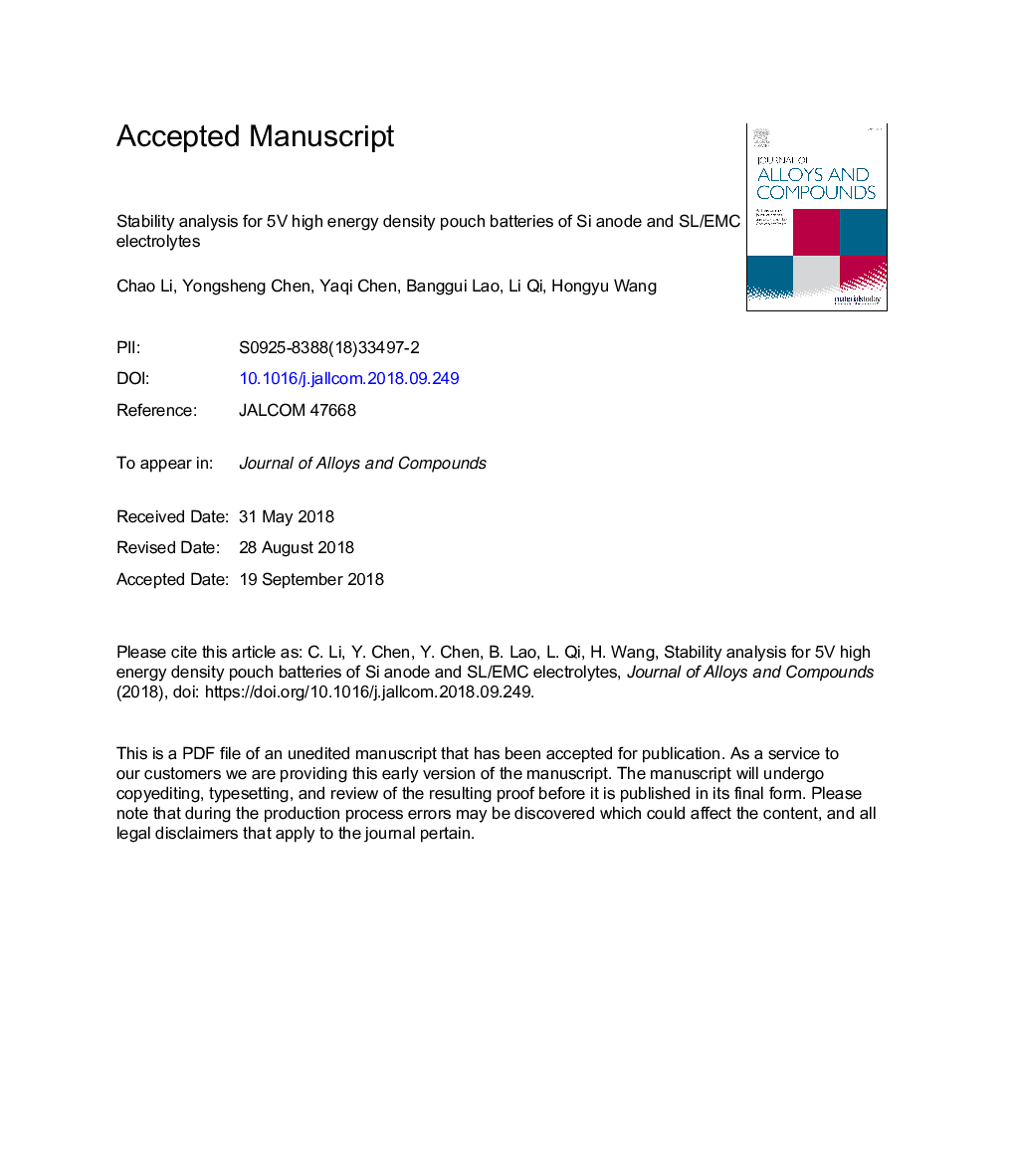| Article ID | Journal | Published Year | Pages | File Type |
|---|---|---|---|---|
| 11019926 | Journal of Alloys and Compounds | 2019 | 32 Pages |
Abstract
Currently, the effective way to improve energy density of lithium ion batteries may include choosing active materials that could guarantee both high voltage and high capacity. Herein, a pouch cell of 4.8â¯V was assembled by stacking several layers of (â) SiOC || LiNi0.5Mn1.5O4 (LNMO) (+) electrodes. Under wide voltage windows, the stability of the non-aqueous electrolyte is a great challenge. Ethylene carbonate (EC) are commonly used in LIBs, as the electrolyte can hardly withstand the high voltage above 4.5 V, but the sulfone (SL) solvent can keep stable under such condition. Even so, the structural stability of Si-based anode has to been considered in such batteries owing to the well-known volume expansion. The FEC additive was to improve the SEI formation for Si materials, and it was added into the SL-based electrolyte to study the compatibility of full cell for the first time. For pouch cell, the tri-electrode curves were measured during discharge process. And the volume changes and gas composition were recorded by a special equipment with respect to the charge voltage and cycling. Then, a failure mechanism and gas generation of the SiOC||LNMO system in both electrolytes was deduced, and the study of full (pouch) cells can guide the practical application.
Related Topics
Physical Sciences and Engineering
Materials Science
Metals and Alloys
Authors
Chao Li, Yongsheng Chen, Yaqi Chen, Banggui Lao, Li Qi, Hongyu Wang,
